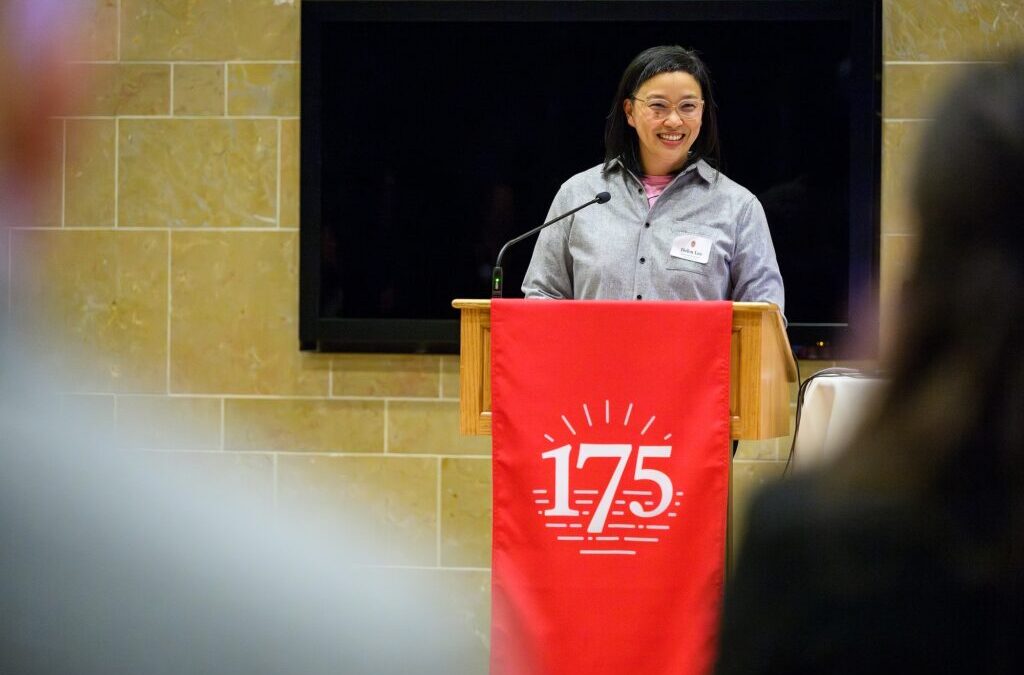Chancellor Jennifer Mnookin hosted a reception at the Chazen Museum of Art Wednesday evening for the University of Wisconsin Board of Regents that celebrated the history of glass on campus as a fusion of art, science, creativity, and innovation. The regents were on campus for February 8–9 meetings.
“The Chazen is really a tremendous crossroads for education, for research, for community outreach, and a place that invites us to learn about incredible UW–Madison innovations that aren’t always as well known,” Mnookin said to the gathered regents, campus and system leaders, faculty, and students. “So it’s really a perfect place for us to celebrate historic achievements, like our world-class UW Glass Lab.”
Mnookin recognized students enrolled in the glass program and said they underscore a point of pride at UW–Madison. “They’re pairing their study of glass with majors as wide ranging as computer science, Asian languages, conservation, biology, and psychology,” she said, noting that not all schools emphasize a diverse program of study. “We encourage it, because we know the process of making connections enriches how students learn and prepares them for great futures and great careers.”
The Glass Lab and academic studio glass program were founded in 1962 by Harvey Littleton, whose technical innovations and influence launched dozens of studio glass programs across the nation in the 1960s and 1970s. Faculty member Helen Lee, head of the UW–Madison Glass Lab, encouraged guests to visit the Chazen’s Look What Harvey Did exhibition to get a full picture of his influence. But Lee said the history of glass at UW–Madison extends far beyond Littleton. “UW–Madison has a 134-year-old history of collecting the finest made glass internationally, and today that same glass educates not only zoology students, but art, art history, and chemistry students alike,” Lee said.
In 1890, Zoology Professor Edward Birge bought an exquisite collection of glass marine invertebrate models made by Leopold and Rudolph Blaschka, the German father-son glassworking duo (Harvard University’s glass flowers are among their most famous still-intact collections). Lee said the first glassblower hired on campus wasn’t Littleton but rather an employee of the physics department, who was hired in 1917 and helped build a vacuum tube that powered pioneering radio broadcasts on campus.
Scientific glassworking has continued ever since. UW–Madison employs two full-time scientific glassblowers, who bend and fuse flasks, pipes, elbows, and tubes into custom-made applications. One of them, Lauren Aria, herself a graduate of UW–Madison’s glass program, was on hand Thursday demonstrating with the chemistry department’s portable FireWagon. As she explained the materials and process to guests, Aria melted, bent, and stretched iridescent glass ribbons to form tentacles of a glass jellyfish, an homage to the Blaschka collection.

